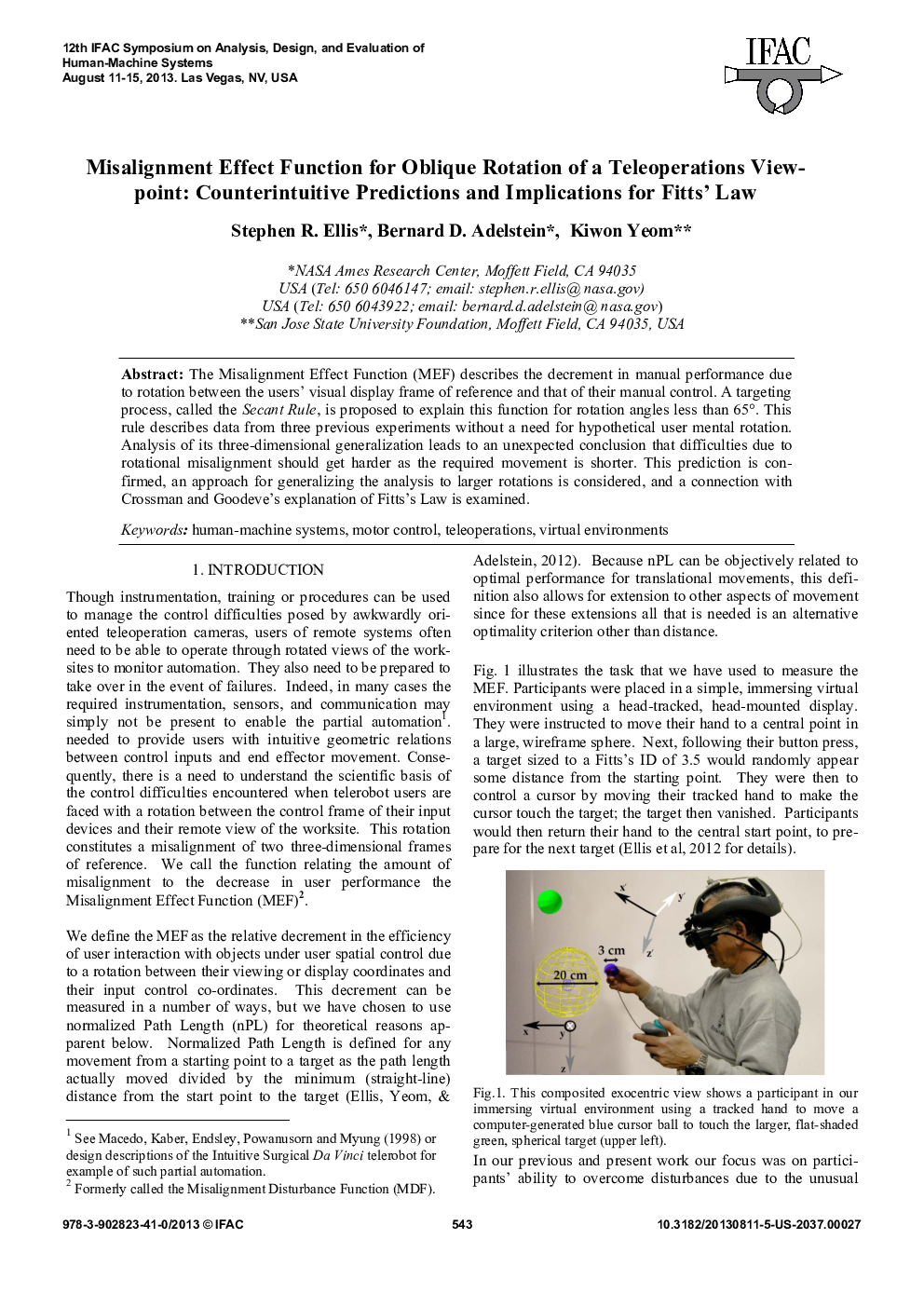| Article ID | Journal | Published Year | Pages | File Type |
|---|---|---|---|---|
| 716300 | IFAC Proceedings Volumes | 2013 | 6 Pages |
The Misalignment Effect Function (MEF) describes the decrement in manual performance due to rotation between the users' visual display frame of reference and that of their manual control. A targeting process, called the Secant Rule is proposed to explain this function for rotation angles less than 65°. This rule describes data from three previous experiments without a need for hypothetical user mental rotation. Analysis of its three-dimensional generalization leads to an unexpected conclusion that difficulties due to rotational misalignment should get harder as the required movement is shorter. This prediction is confirmed, an approach for generalizing the analysis to larger rotations is considered, and a connection with Crossman and Goodeve's explanation of Fitts's Law is examined.
